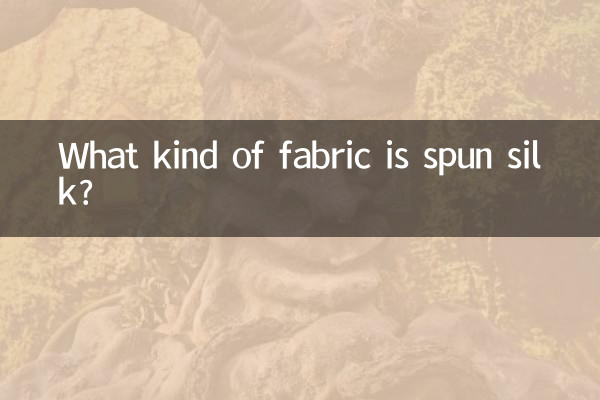What kind of fabric is spun silk?
In today's fast-paced life, people are paying more and more attention to comfort and environmental protection when choosing clothing fabrics. Recently, the discussion on the traditional fabric "spun silk" has increased significantly across the Internet, especially in the fields of fashion, environmental protection and health. This article will introduce the definition, characteristics, production process and market trends of silk in detail to help you fully understand this ancient and precious fabric.
1. The definition and history of silk

Spun silk, also known as pure silk or mulberry silk, is a natural protein fiber made from mulberry silkworms spinning cocoons and then reeling. Its history can be traced back to ancient China. As early as 5,000 years ago, China began to raise silkworms and weave silk, and silk has become one of the important symbols of Chinese civilization.
2. Characteristics of silk
Spun silk is widely loved for its unique texture and properties. Here are its main features:
| Features | describe |
|---|---|
| Soft and comfortable | The silk fiber is fine and smooth, soft to the touch and comfortable to wear. |
| Moisture-absorbent and breathable | It has good moisture absorption and breathability, suitable for summer wear. |
| Natural and environmentally friendly | Silk is a pure natural fiber, biodegradable and environmentally friendly. |
| Glossy and elegant | Silk has a natural luster and looks noble and elegant. |
| temperature regulation | Warm in winter and cool in summer, it can adjust the body feeling according to the ambient temperature. |
3. Silk production technology
The production process of silk is complex and delicate, mainly including the following steps:
| step | describe |
|---|---|
| Sericulture | Silkworms feed on mulberry leaves and spin silk to form cocoons. |
| reeling | Soften the cocoons in hot water and pull out the silk threads. |
| weaving | The silk thread is spun into silk fabric. |
| dyeing | The silk is dyed according to the requirements. |
| finishing | The texture and performance of fabrics are improved through special processes. |
4. Market trends of silk
In recent years, as consumers pay more attention to sustainable fashion, the market demand for silk as an environmentally friendly fabric has continued to grow. The following are the hot topics about silk on the Internet in the past 10 days:
| hot topics | heat index |
|---|---|
| Silk and sustainable fashion | ★★★★★ |
| Application of silk in summer clothing | ★★★★☆ |
| Silk and skin health | ★★★☆☆ |
| High-end customization of silk | ★★★☆☆ |
| Comparison of silk and other natural fabrics | ★★☆☆☆ |
5. Care and maintenance of silk
In order to extend the service life of spun silk fabrics, here are some maintenance suggestions:
| Maintenance method | Things to note |
|---|---|
| Hand wash or professional dry cleaning | Avoid machine washing to avoid damaging the fibers. |
| Use neutral detergent | Avoid using alkaline detergents to prevent fabrics from turning yellow. |
| Dry in shade | Keep out of direct sunlight to prevent fading. |
| Low temperature ironing | Use a cloth when ironing to avoid direct contact with high temperatures. |
| Store properly | Avoid humid environments to prevent mildew. |
6. Conclusion
As a fabric with a long history and excellent performance, spun silk not only occupies an important position in traditional clothing, but also takes on a new lease of life in the fields of modern fashion and environmental protection. With the advancement of science and technology and the diversification of consumer demands, the application scope of silk will be further expanded and it will become one of the important choices in the future fabric market. I hope this article helps you understand silk better and make more informed choices in your daily life.

check the details

check the details